|
The One-Armed Major Got There First Most of it has been civilized, but a few bits of Flaming Gorge still look as John Wesley Powell first saw them in 1869. Powell took ten men down the Green and Colorado Rivers in four wooden boats, his only purpose to discover. He had no funding other than his own and a little bit from the Illinois Natural History Association and Illinois Industrial University (today’s University of Illinois at Urbana-Champaign). He also had government permission to take rations at any U.S. Army fort he encountered, but that was it for government help. Though he had been a major on Grant’s staff during the Civil War, it appears he didn’t really expect any support. 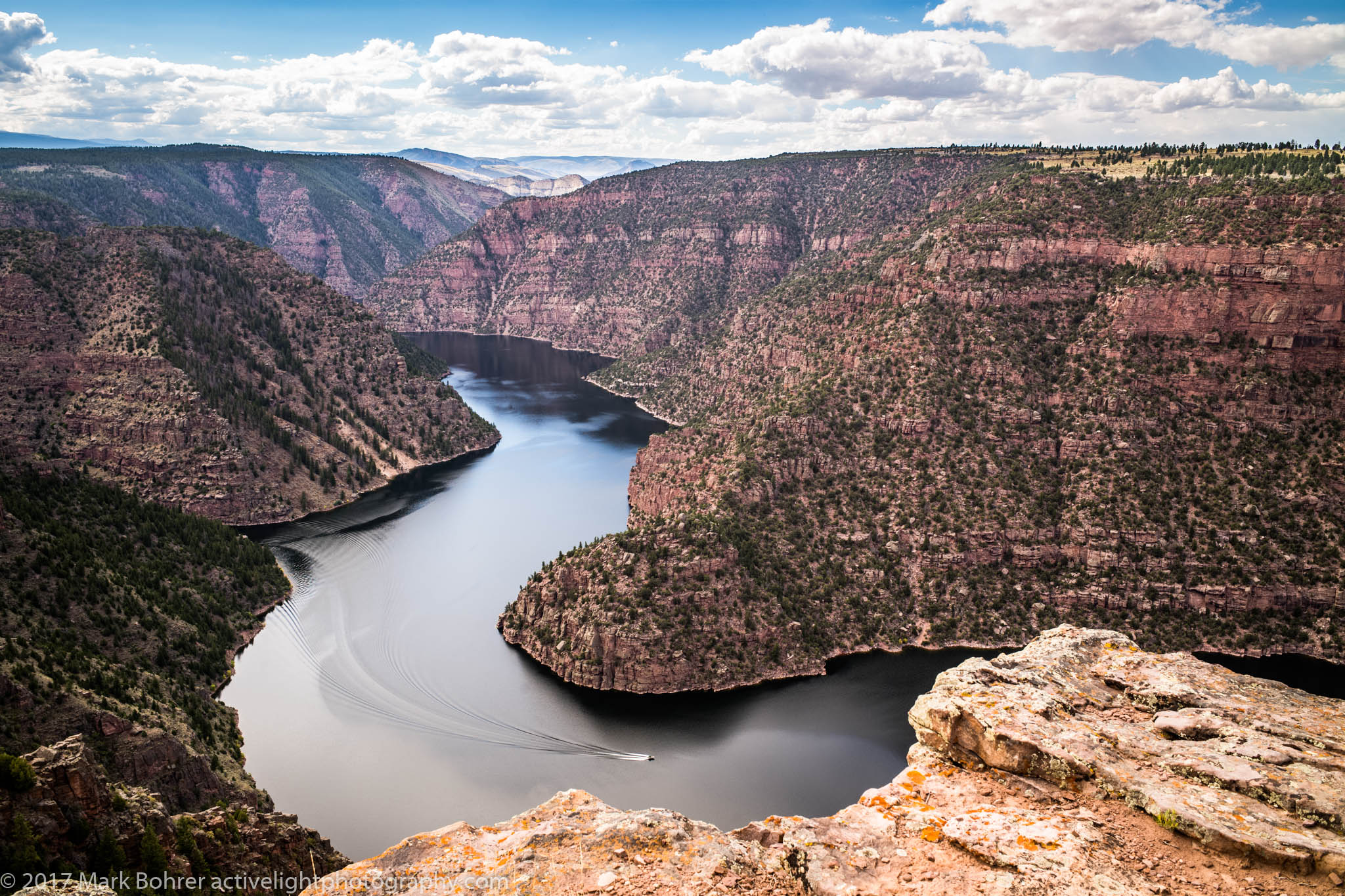 Red Canyon Overlook and powerboat wake, Flaming Gorge NRA He named Flaming Gorge for its brilliant red sandstone on that first expedition. He also correctly predicted scarce water as the primary issue for the American West. 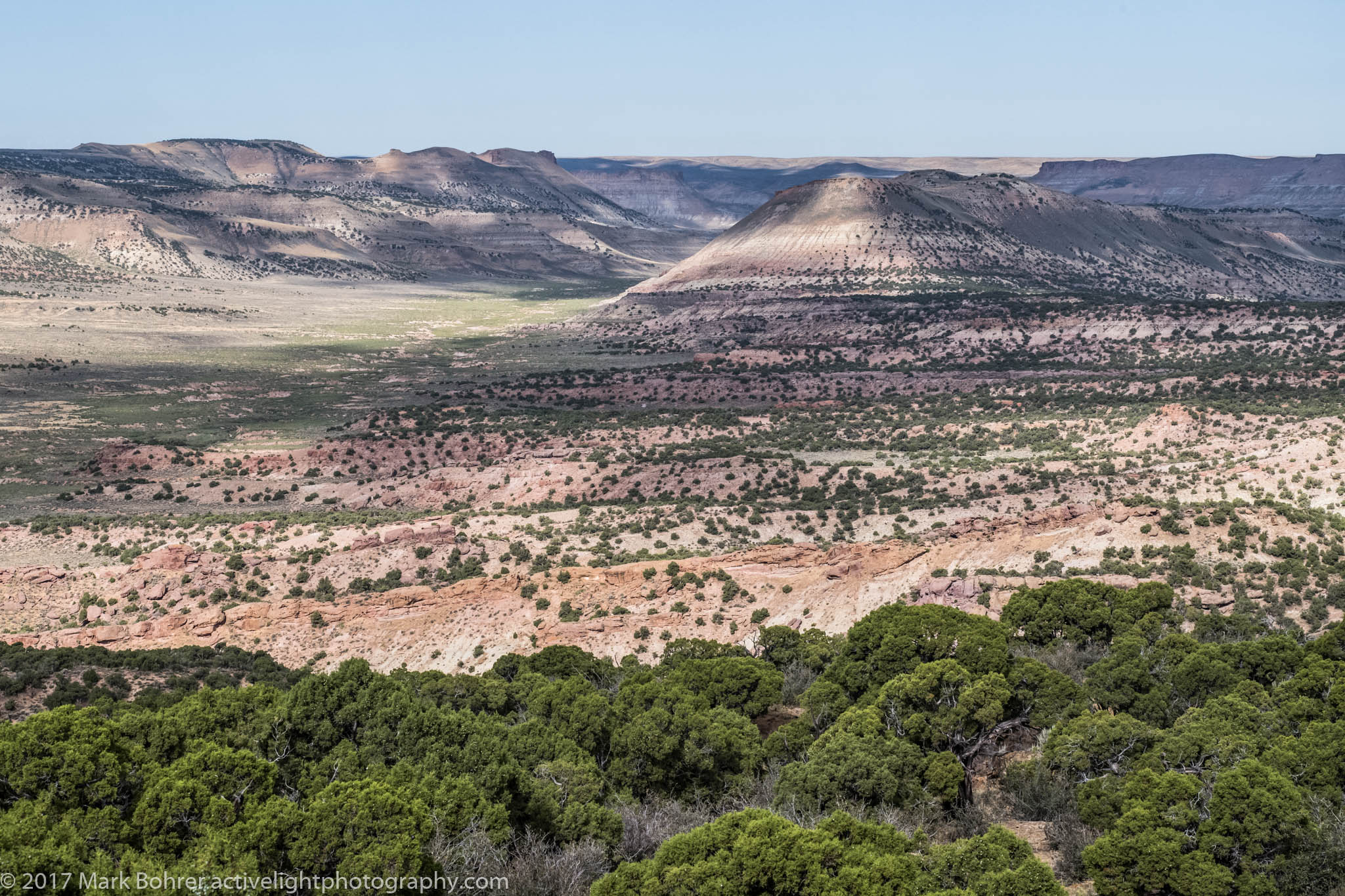 Cloud shadows at Little Firehole Overlook, Flaming Gorge NRA I’m not sure whether he would be appalled or pleased at Flaming Gorge and its reservoir today. Water Storage Project and Tourism Flaming Gorge Dam was completed in 1964. It was a way for upper Colorado Basin states Utah, Colorado and Wyoming to store some of the water they were allotted by the Colorado River Compact of 1922, and the Upper Colorado River Basin Compact of 1948. The likely tourism and other economic opportunities to be brought by the reservoir were not lost on citizens of nearby Green River. But there were some who opposed the drowning of their seasonal pastures and ranchlands. There was a cursory archaeological survey of the land to be flooded, but the recommended further study of local history was never completed before possible artifacts and sites were under water. 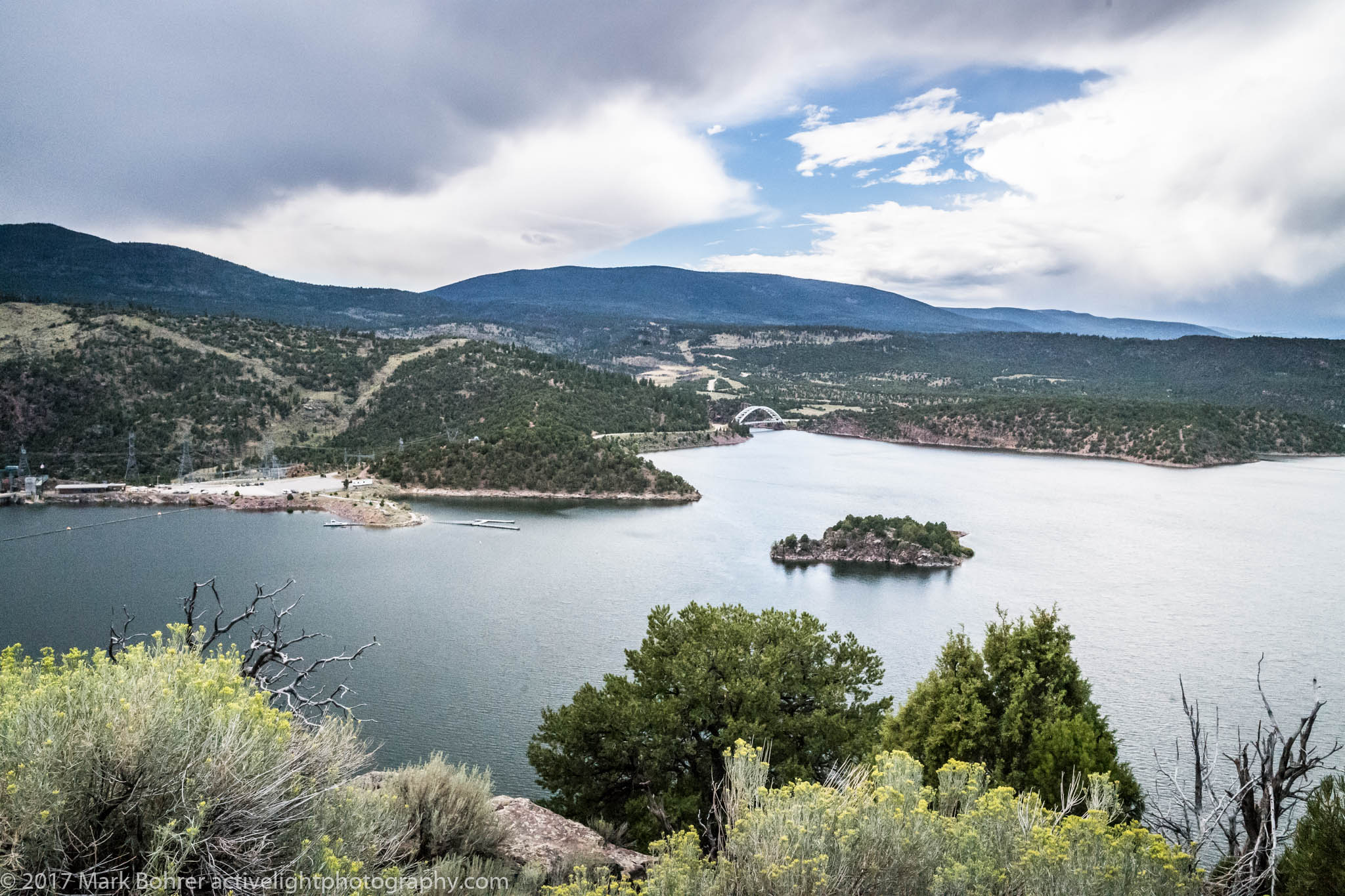 Flaming Gorge impoundment – dam at left The reservoir holds a huge 4 million acre feet of water and generates almost 152,000 kW of power. Most of the water goes to irrigation, but the National Recreation Area’s tourism may be a bigger economic driver for the nearby towns of Green River and Rock Springs, Wyoming. A Quiet Place The most striking thing after Flaming Gorge’s intense beauty is the quiet, especially at Red Canyon Overlook near the dam. We stopped to gape at the damsite and its impoundment, getting buzzed by turkey vultures and osprey. But the views at Red Canyon Visitor Center and its surrounding forest with its busy chipmunks and marmots were the real attractions. 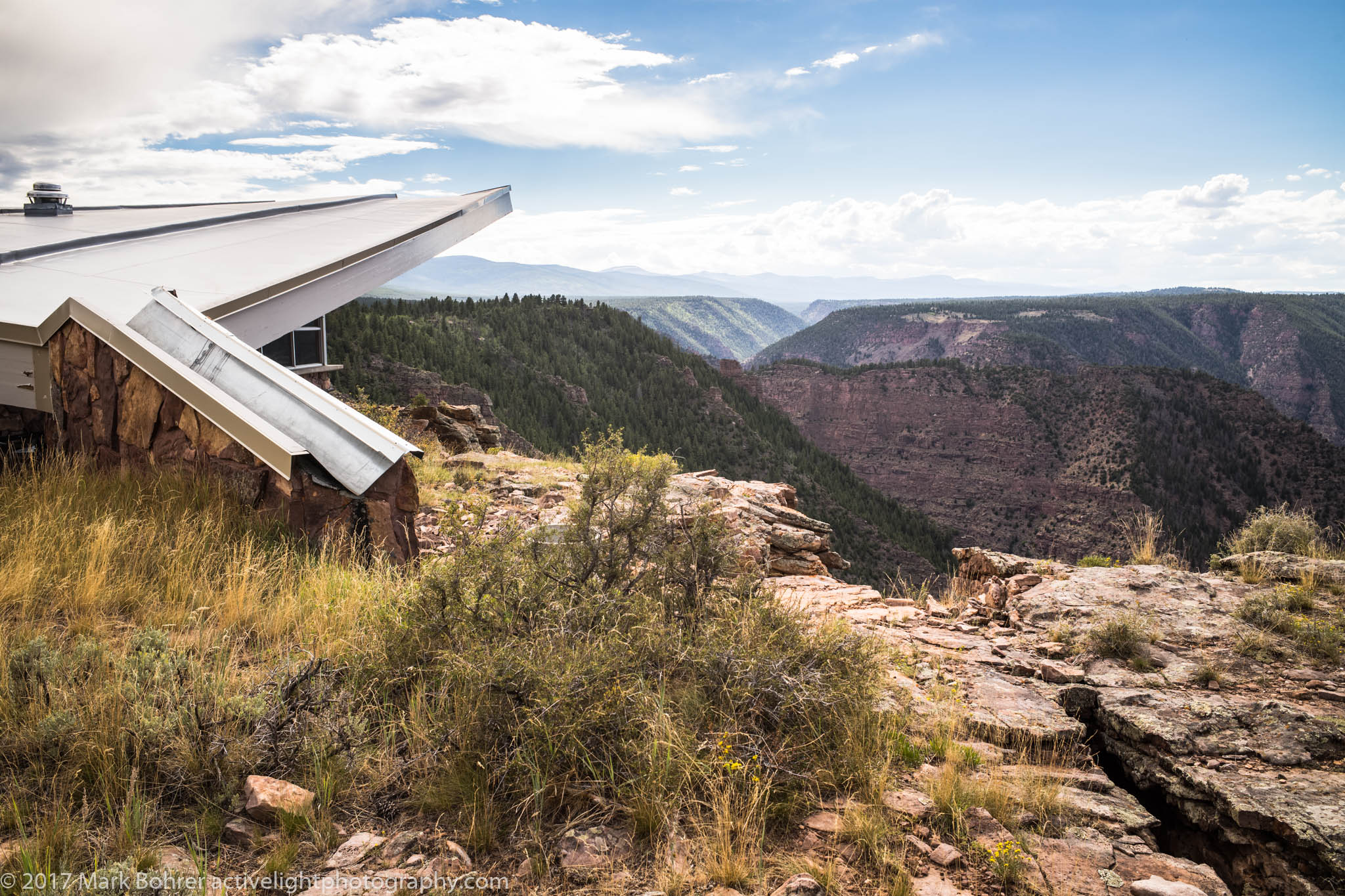 Visitor center and Red Canyon overlook Visitor center volunteers and rangers know they’re in a cool place, and their humble appreciation makes them a pleasure to speak with. One of them told me to look for powerboats on the water to show just how deep the canyon was. 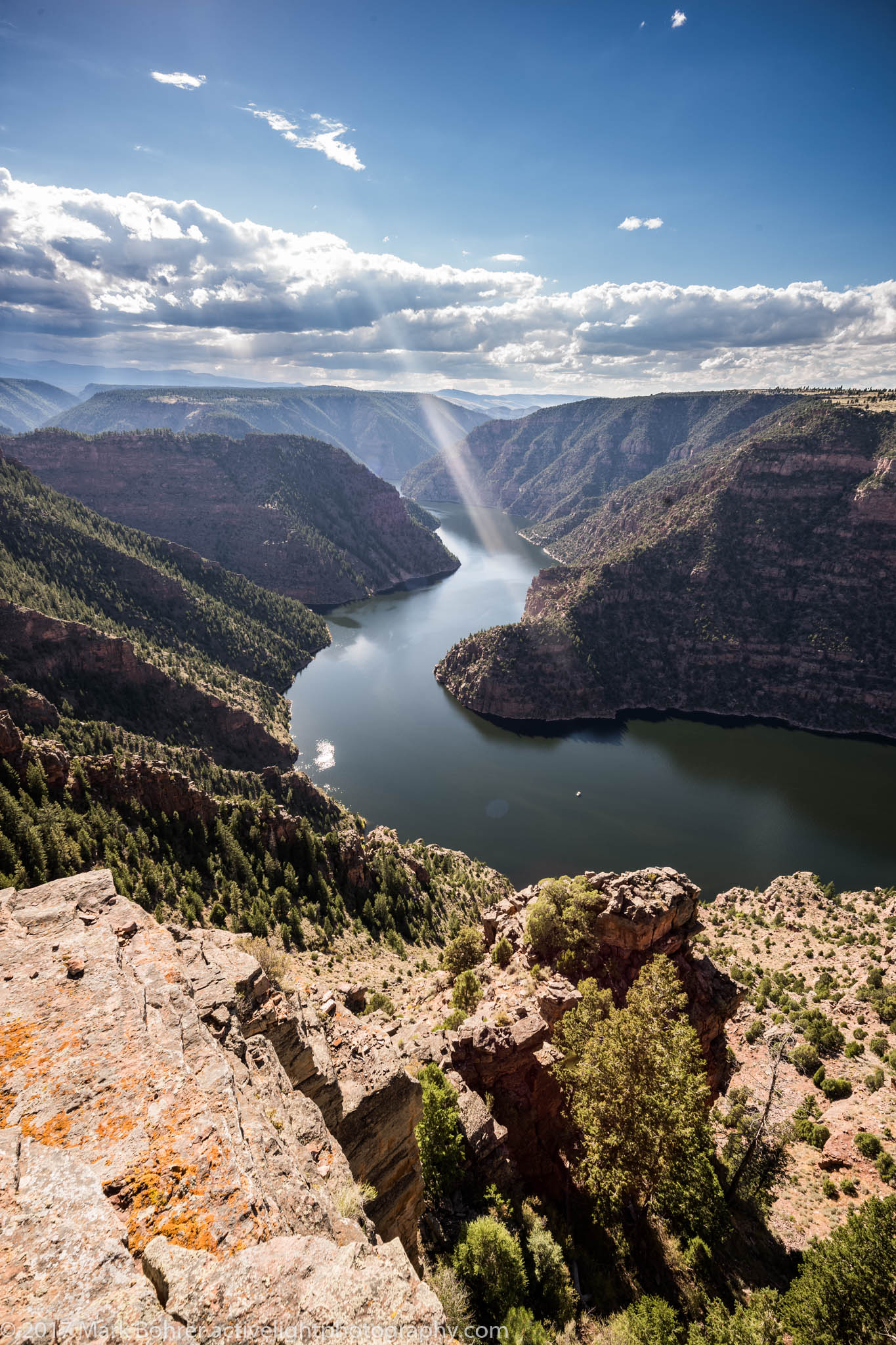 Powerboat way down there – the tiny white dot 16-18-21mm f/4 Tri-Elmar ASPH at 16mm While Pat fed the pups, I scrambled carefully around chainlink fencing onto smooth sandstone slabs, walking close to the edge for unobstructed photographs of the gorge and distant mountains in the clouds of a clearing storm. Sure enough, a powerboat soundlessly made its way around the curve in the water far below, leaving a seemingly waterbug-sized wake behind it. 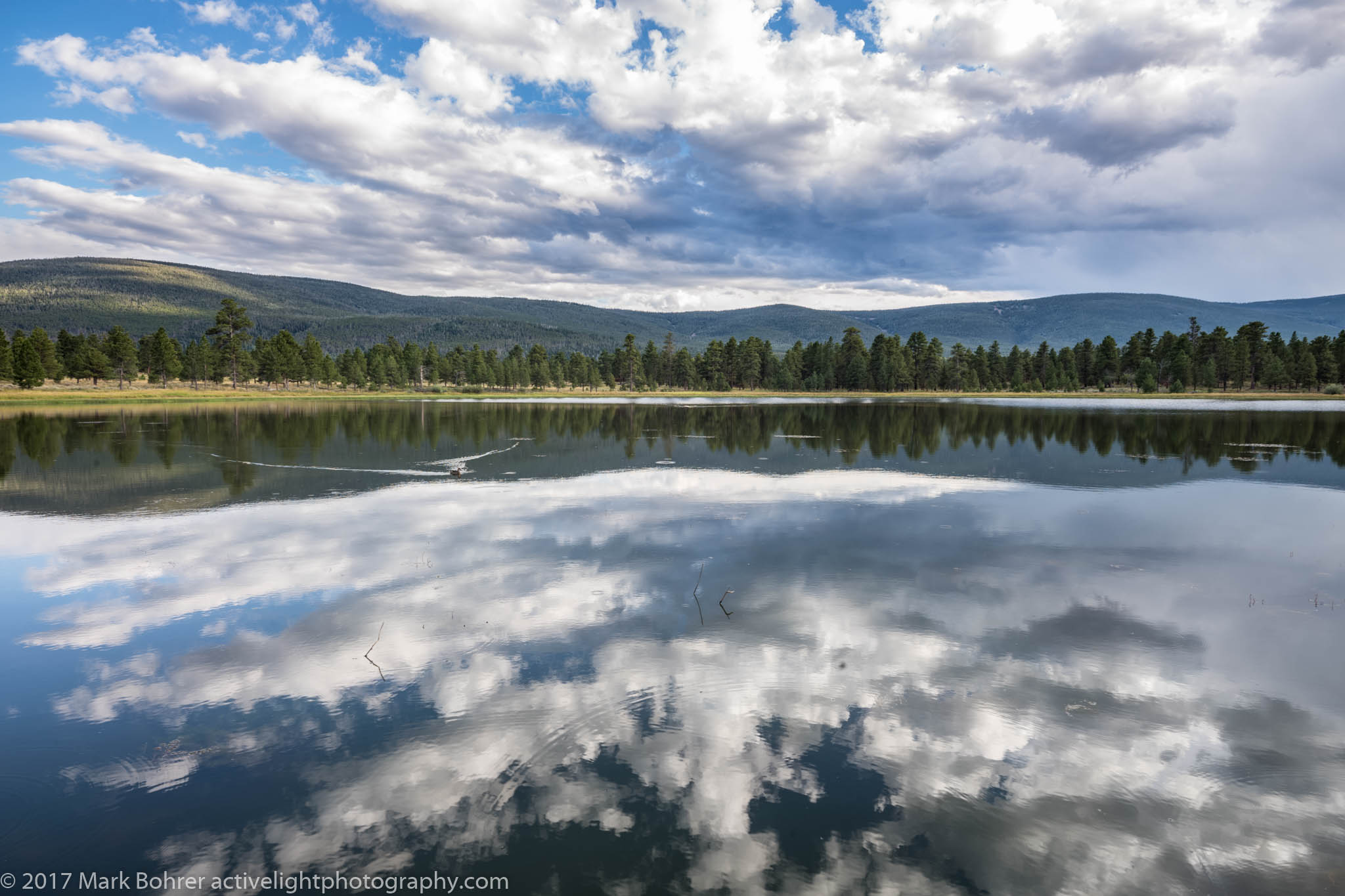 Mallard on the lake near Red Canyon After watching several mallard females paddling around the mountain and cloud reflection in a small lake, we enjoyed an excellent dinner at Red Canyon Lodge. We spent the night at Flaming Gorge Recreation Services, an RV Campground just outside Dutch John. That town was built to house workers during the dam’s construction, and was named for an early German immigrant rancher. 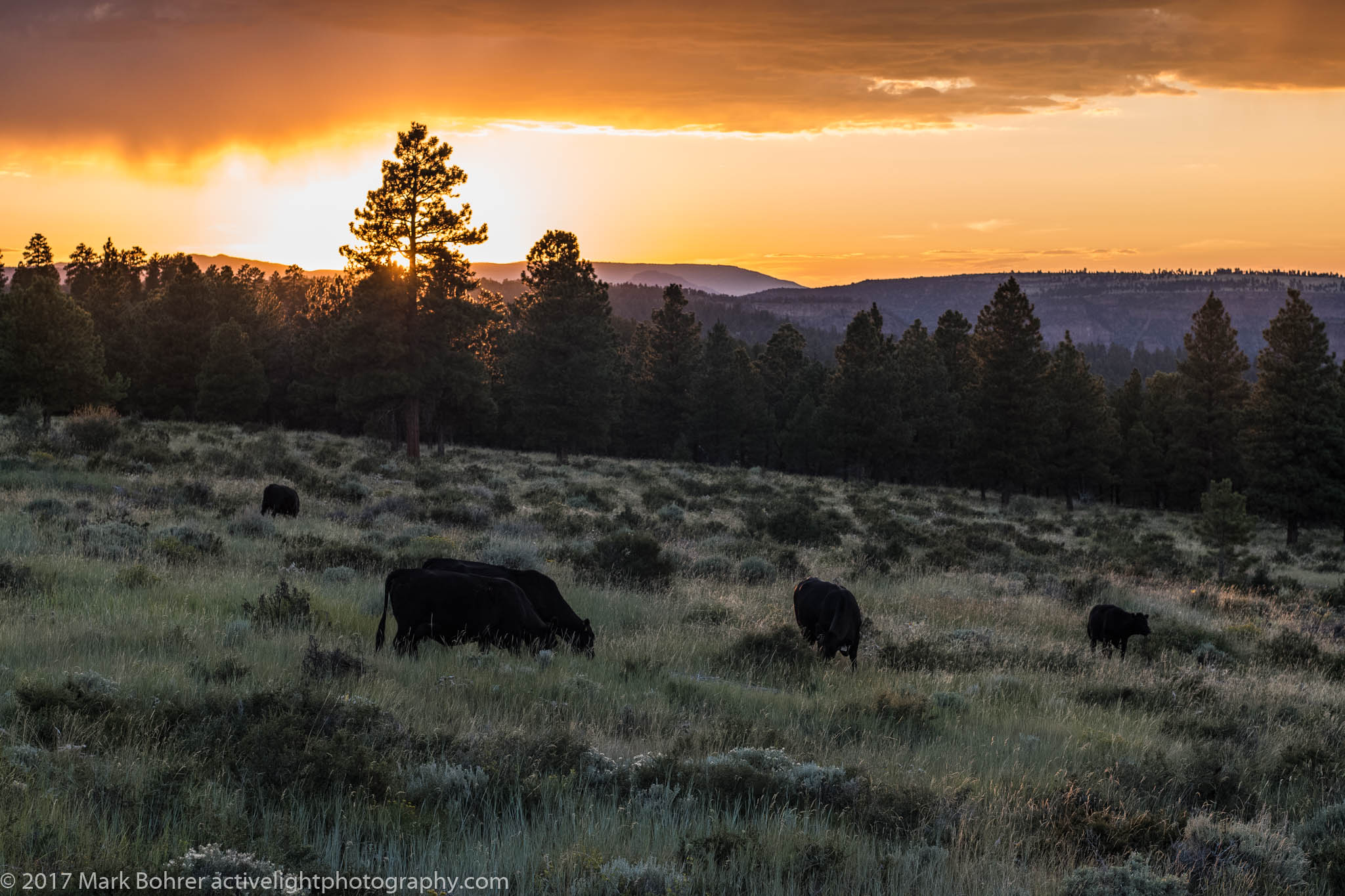 Bovine sunset above Red Canyon / Swett Ranch We got up and out the next morning for early light, but it was a bust without storm clouds. We were tempted to hang around for another meal at the Red Canyon Lodge, but after unsatisfying chipmunk photography and some missed marmot opportunities, we headed for Colorado. 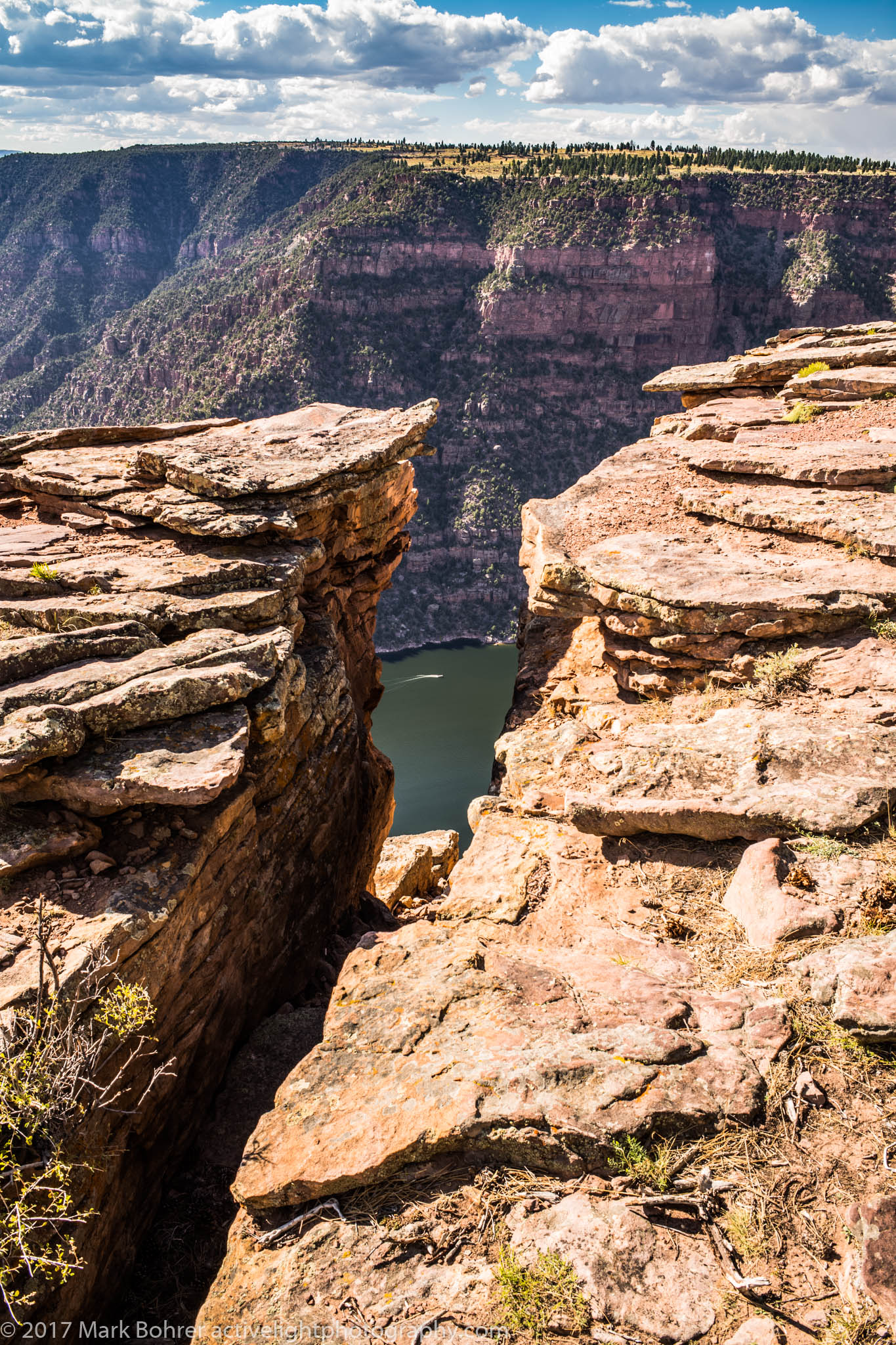 Powerboat through the slot, Red Canyon Overlook 28mm f/2.8 Elmarit-M ASPH Shot Notes I used a Leica M10 with 16-18-21mm, 28mm, 35mm and 75mm lenses for the landscapes. The 16-18-21mm f/4 Tri-Elmar-ASPH is impossibly small for such a high-quality lens, and a pleasure to shoot with. The key to effective use of such a wide field of view is filling it with important detail (but not too much). When is it too much? When it doesn’t make a strong contribution to your story. 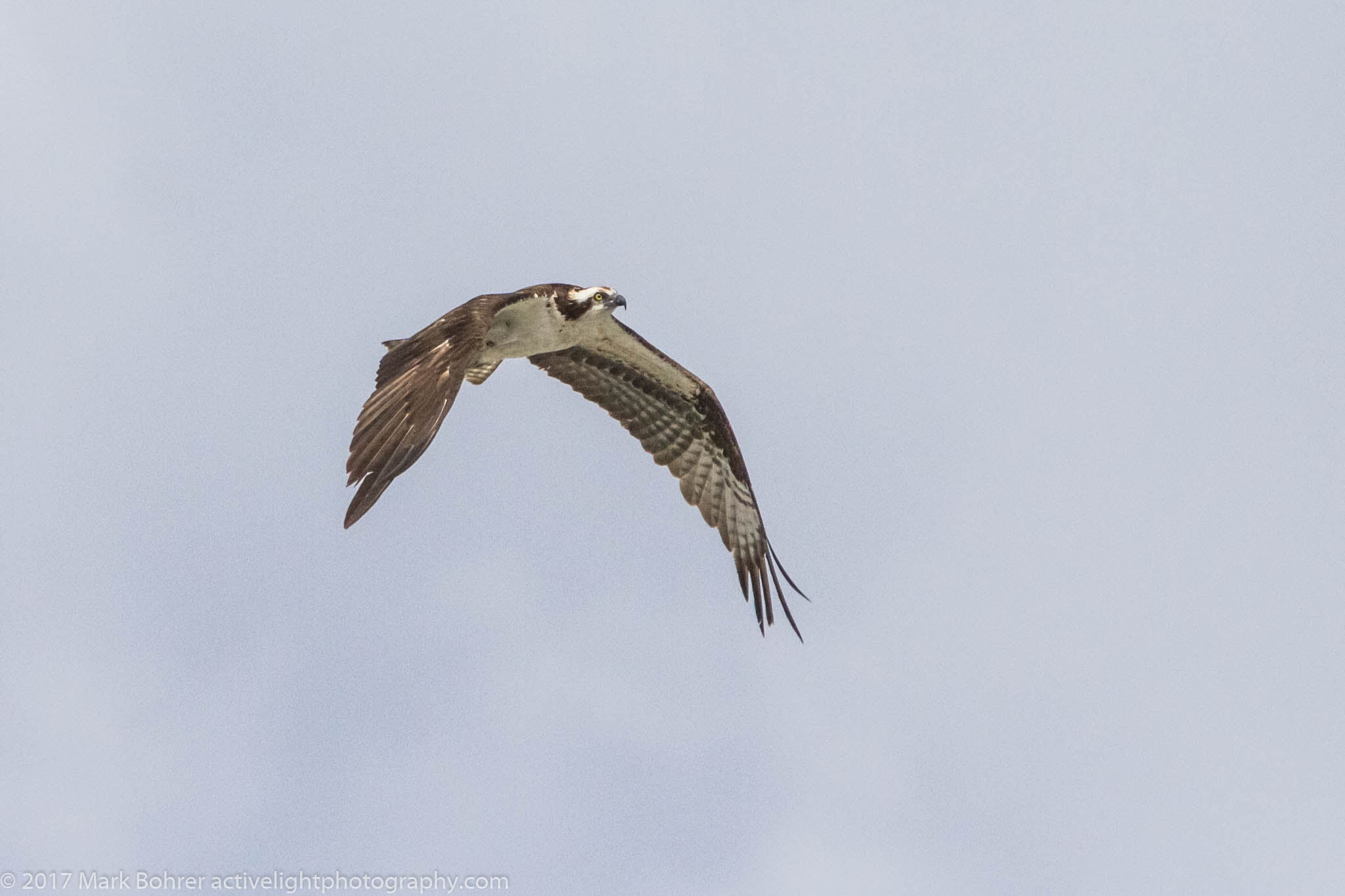 Osprey above Flaming Gorge Dam I handheld the 400mm f/4 DO IS, EF 1.4X II and EOS 7D for wildlife. As with most handheld raptor shots, some cropping was necessary. It’s tough to get anywhere near those guys from the ground unless you find a nest, and those are usually inaccessibly far away too. 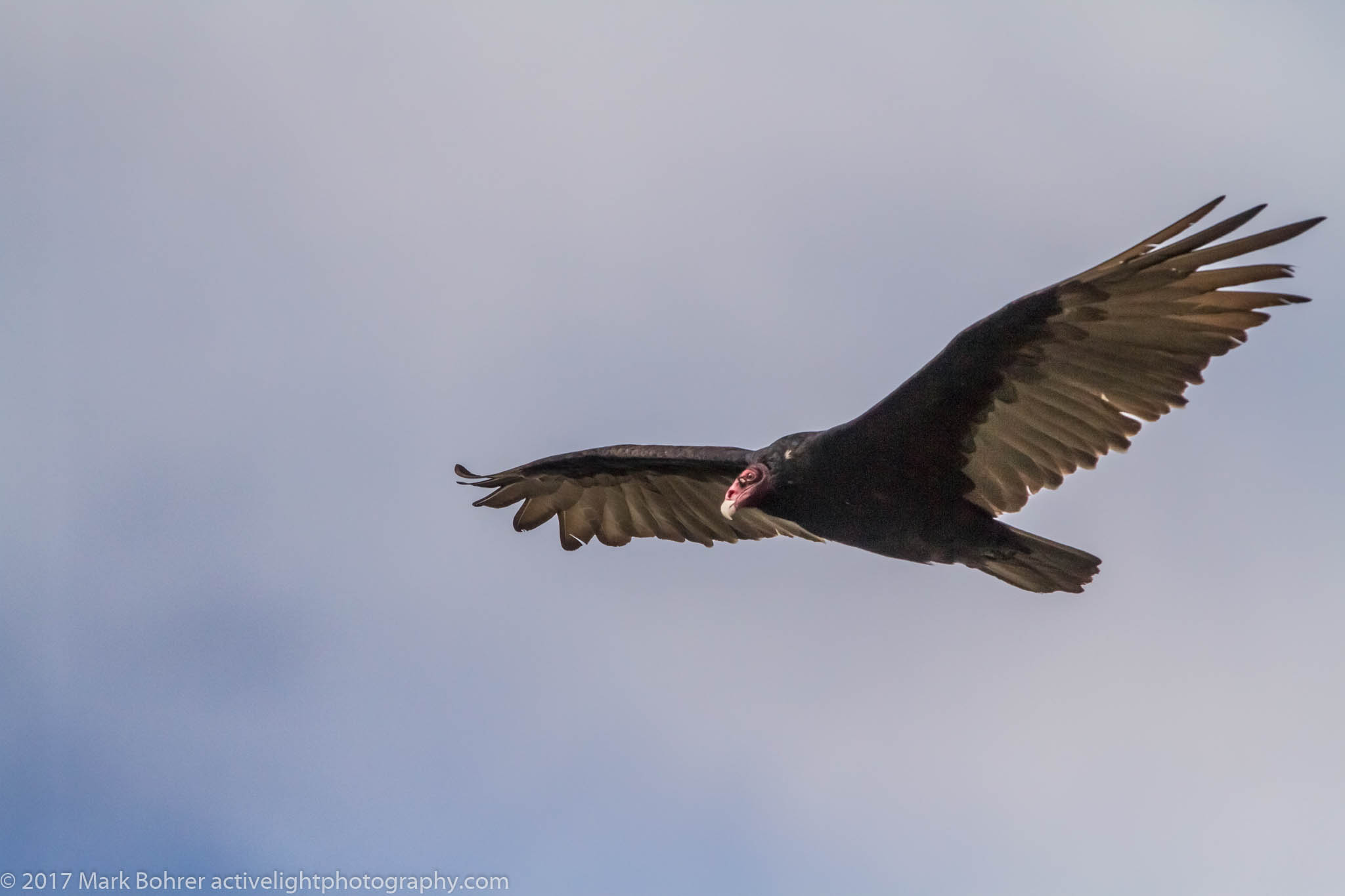 Turkey vulture closeup over Flaming Gorge Dam More Information Powell, J.W., & Stegner, W. (1987). The Exploration of the Colorado River and its Canyons. New York, NY. Penguin Books. FACT SHEET FOR FLAMING GORGE DAM, retrieved from http://tinyurl.com/y7r7b4bc Flaming Gorge Dam and Reservoir, retrieved from https://www.wyohistory.org/encyclopedia/flaming-gorge-dam-and-reservoir Colorado River Compact, retrieved from https://en.wikipedia.org/wiki/Colorado_River_Compact Flaming Gorge Dam, retrieved from https://en.wikipedia.org/wiki/Flaming_Gorge_Dam Dutch John Resort, retrieved from https://dutchjohnresort.com/dutch-john/ 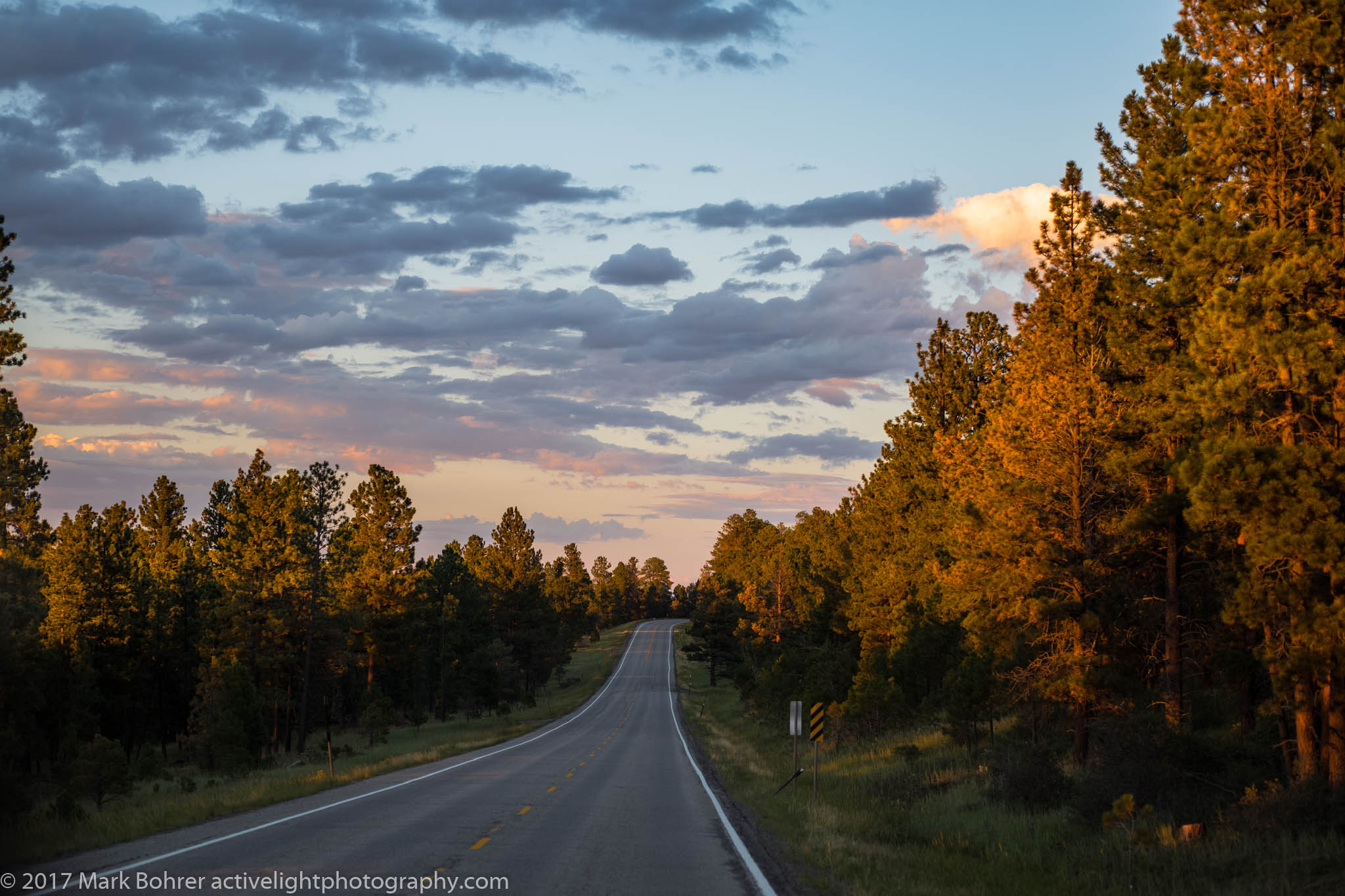 Departing sunset on the road from Red Canyon, Flaming Gorge |
(408) 483-3782
Curious about how to shoot ruins?(408) 483-3782

Recent Comments